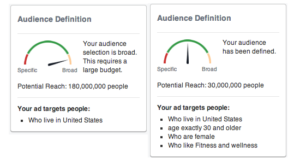
Startups are (usually) investing someone else’s money in hopes of generating a sizable return. So why are startups so often encouraged to spend ad nauseam for revenue goals when profitability is the ultimate goal?
I’m sure you’ve gotten the pitch from your marketing staff or agency – “If we had more budget, we could really move the needle. At current levels, this is what we can do.”
There are a few tricks of the trade used to drive this point home:
Showing that overall media costs are increasing
CPMs in paid media typically rise over time. Supply, demand, and inflation are real. Does that mean you need to increase along with market factors? Nope.
Showing global spend level increases
No offense to some great sources of data like eMarketer and Forrester Research, but total US advertising spend should not be misused to incentivize your startup to spend more. Like any factual document, the results can be twisted to fit the need of the messenger.
Showing competitor spend level increases and assuming it’s performing
“You know, your competitor is spending 5x more than you. You risk losing market share without matching that spend level.” If you hear this one, demand proof that it’s having an impact for them on any legitimate measure. Chances are, your competitor is, in fact, wasting money and making your job easier even if you stand pat.
There are legitimate reasons and scenarios to spend significant money on media. However, assuming you’re like most startups I run into, budgets are fixed and you need to do more with less.
With that in mind, here are some alternatives for startups to consider:
Identify a sub-segment of your target and own it
I’m sure you have that restaurant in your area that has a menu 100 items long. I used to pass one each day (now closed) that would one day advertise hot dogs, followed by fish, followed by Thai chicken, and so on. They obviously didn’t have a quality product in all those categories. The lesson – instead of being a blip in a giant category, put your money toward owning a smaller category of consumers and really pay off on your promise to that group. This saves you money while building credibility.
Identify the media channels that makes sense for you and focus dollars there while ignoring others
So what if Snapchat just came out with a new ad unit? If they don’t align with your audience and there’s no reason to be there, don’t be there!
Don’t ignore free or barter opportunities to focus only on paid media
Are you posting interesting information on key social media channels? Are you improving your site’s SEO value? Make sure you exhaust your “sweat equity” marketing channels as much as you’re paying to play in others. Are you in a vertical with complimentary products? Send their offer to your email list and vice versa.
Limit media testing and save the results
On limited budgets, I typically recommend a monthly testing cadence for channels and creative. Form your hypothesis, allocate enough money to learn from the test, log the results, and implement learnings to core campaigns. There are too many tests happening in startups with tiny daily budgets. Your marketing needs to strike oil. Use an auger. Not a trowel.
Get creative in the face of rising media costs
The biggest players in the market are driving these costs. Test some new entrants in that case. I’ll be you get a good rate. Create programs that convert better to render higher costs per impression moot.
Need help spending aligning your current marketing budget with your startup’s financial targets? Reach out here.
- « Previous
- 1
- 2
- 3
- Next »










